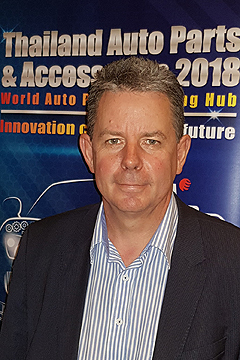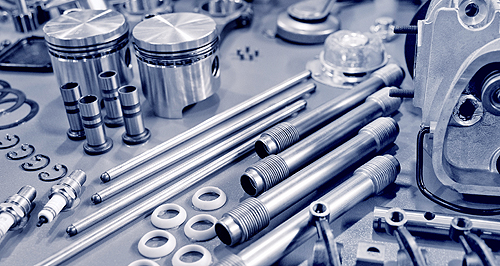Make / Model Search
News - General NewsParts trade with Thailand has big upsideTrade up: The Australian Automotive Aftermarket Association (AAAA) says there is potential in the Thai parts market. Thai exporters may find it hard to crack the concentrated local market9 Feb 2018 By IAN PORTER AN AUSTRALIAN industry leader says there is “enormous potential” for expanding the two-way auto parts trade with Thailand thanks to synergies between the two markets and the free trade agreement. However, parts manufacturers need to be aware that there are crucial differences between the two markets, according to Australian Automotive Aftermarket Association (AAAA) chief executive Stuart Charity. “Many of our members are doing business within Thailand, both exporting into Thailand, manufacturing in Thailand and also importing from Thailand,” he told an Australia-Thai trade seminar in Melbourne. “I do believe there is enormous potential to grow that business relationship. “Australia and Thailand have very strong ties, and we think that there is much greater opportunity with the FTA (free-trade agreement) and lots of synergies between the two to develop that even further.” Mr Charity noted that since the FTA came into effect in 2005, the imbalance in automotive trade has grown rapidly. “Out exports are in the hundreds of millions, around $400 million and imports are about $7 billion, so they are doing quite well. “The trade deficit is extremely high because one third of all vehicles sold here are made in Thailand. The FTA has been very good for Thailand.”  Left: Australian Automotive Aftermarket Association (AAAA) chief executive Stuart Charity Left: Australian Automotive Aftermarket Association (AAAA) chief executive Stuart CharityAustralia’s $400 million of exports are mainly parts, while some of the imports from Thailand are parts made there by Australian companies. The Australia-Thai Auto Parts Business Matching seminar was designed to bring together companies from both countries in a bid to expand trade in both directions. Twenty Thai companies had small exhibits at the seminar showing what they could do and a number of AAAA members were present to assess the offerings. Mr Charity said the aftermarket sectors in the two markets were quite different in that Australian buyers were in the market for parts that were good for towing, off-roading and camping while customers in Thailand were generally companies looking to make vehicles more suitable for the work in hand. “We did a market study a couple of years ago on opportunities for Australian companies in Thailand,” Mr Charity said after his presentation. “By far the biggest opportunity is in the fleet market. You’ve got a lot of mining and forestry and other industries and they need vehicles that are modified to suit the purpose. “There is also a number of companies in Thailand and all they do is take a chassis – they buy, say, 200 HiLux chassis or Ranger chassis – and custom-build vehicles for fleet buyers. “They are mainly based around Rayong, where the car making is. There are Australians in those businesses, executives and engineering managers, and they know the quality of the Australian product. So there are opportunities there, in lighting, in frontal protection, suspension, in all of those areas.” For Thai parts manufacturers, the challenge was more about finding a way into the distribution chain in Australia. “The supplier-to-market channel has consolidated in Australia. You really need to go through one of the three major distributors.” He said most of the best-known aftermarket parts retailers were now controlled by just three distribution groups, Bapcor, GFC and Supercheap. “You would have to go through those three unless you are in a specialist area. If you are in a niche area like air-conditioning, there would be other channels available. “It’s a very mature industry in terms of its structure. I’m not saying it’s impossible, but it is a hard one to crack into for overseas companies.” And having a suitable product at a cheaper price may still not be enough, he said. “You need all the back-up service, you need a local presence. I think it would be difficult for a Thai supplier to supply directly with one of the majors here with no local presence. They’d either have to joint venture or partner-up with a local supplier.” Mr Charity said Australia was a tempting market for aftermarket parts suppliers, even though it was a relatively small country in population terms. “Retail sales in the aftermarket’s around $US11 billion, so it’s a big market. The independent aftermarket – the non-car company branded parts – has about 70 per cent of that.” Mr Charity said there was both good and bad news for Thai suppliers. “The good news is, if you are able to get into some of the major chains, they are going to give you excellent volume even though Australia is a quite small market with a diverse car parc. The players that are in the market do have strong volumes. “The challenge is getting into the market. The market is driven by very high quality. We’re a competitive cost alternative to the genuine parts chain, but we do sell premium product and often the product sold through the aftermarket is superior to the original equipment parts designed to enhance the performance and function of the vehicle.”  |
Click to shareGeneral News articlesResearch General News Motor industry news |









Facebook Twitter Instagram